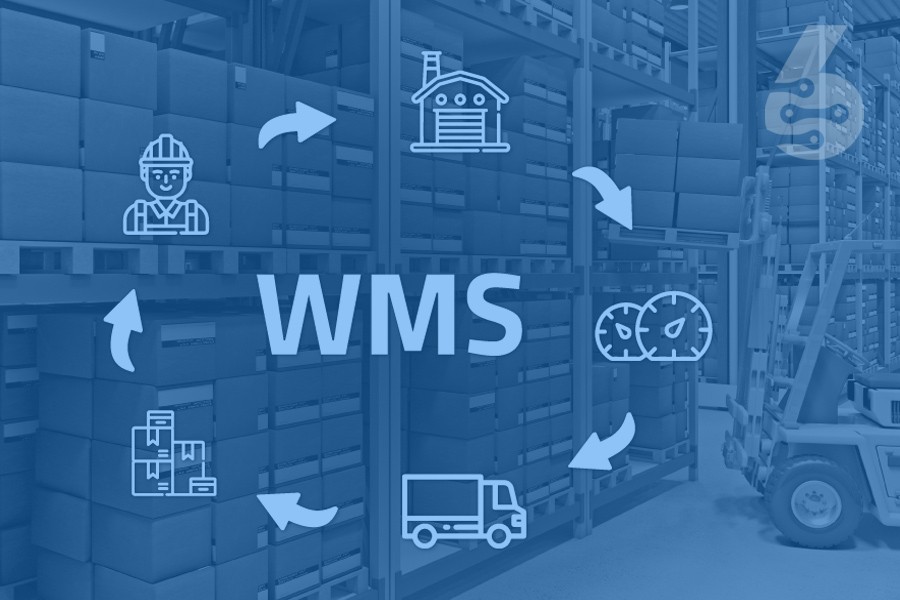- HRM
- 15.11.2022
Successful human resource management: the fuel for every company
Modern human resource management serves to sustainably develop an organization and thus ensure the company's success.
Dr. Andreas Maier
15.11.2022
“ A company's human resources department is its lifeblood. The members of this department are responsible for ensuring that the company has the right people in the right places, with the right skills to meet its strategic objectives. “
What is the definition of human resource management?
Human resource management (HRM) is a business administration sub-area that revolves around work and personnel aspects. It combines all strategies, measures, and fields of action of HR, which are to support the company's development - also with the help of change processes.
In large companies, HR management can also be synonymous with the personnel department. In everyday work, however, HR management is not the exclusive task of this department but should be developed and implemented by all managers.
The cited "personnel management fields" include the following areas:
- Strategy
- Planning and organization
- Personnel development
- Personnel management
In the past decades, human resource management has undergone considerable changes and significant expansions. Since the beginning of the 1990s, the central realization has been that the employee is a substantial resource for the company. Today, human resource management realizes that every employee contributes to the company's success. And this as a person and not as "human capital."
What are the tasks of human resource management?
In times of an employee market, advancing demographic change, and a shortage of skilled workers, human resource management must fulfill a central task: All departments must be staffed with qualified personnel at all times. Because without eligible employees, no company will be economically successful in the long term. Human resource management is thus a central component of strategic marketing.
The following 7 task areas are derived from this:
- Personnel planning: How many staff are needed? What qualifications must they have?
- Personnel procurement or recruiting: Internal and external procurement of personnel through the appropriate channels
- Personnel management and communication: All processes from onboarding to leaving, internal and external communication with employees
- Remuneration management: All principles of remuneration, from basic salary to personal bonus
- Staff development and retention: All measures of training and development, job enlargement, job enrichment, and job rotation
- Staff appraisal: Overview of performance and assessment of the potential of employees
- Personnel controlling: Management and control of all human resource processes based on relevant key figures.
Viewed as a whole, these seven central human resource management fields aim at the organization's sustainable development and ability to hold its own in the market.
These fields can be strategic - such as remuneration management or personnel development - or of a non-strategic but transaction-oriented nature - such as personnel administration and personnel control.
What are the goals of human resource management?
Looking at the fields of action, it becomes clear that functioning HR management contributes to the company's success. A strong HR that sees itself as a business partner will formulate three main goals that are strategically important for the company.
Goal 1: Know and combine business goals and employee wishes
Reconciling employees' wishes with business goals is human resource management's crux and supreme discipline. The social needs of employees (leisure time, family, etc.) often conflict with the company's economic goals (profit maximization, expansion) because younger generations of employees, in particular, tend to view the purely financial need for success critically. This is where HR needs to start, listen, take concerns seriously and implement solutions within a strategic framework.
Goal 2: Achieve and maintain a high level of employee satisfaction
If your HR management succeeds in keeping fluctuation as low as possible and you retain the right employees with the right skills for the long term, you are doing a lot right. It has been proven in numerous studies that a satisfied employee is a more productive and creative employee. To achieve this, use all possibilities of employee retention - point out development paths, and communicate perspectives.
Goal 3: Achieve sustainability through cost reduction and secure higher competitiveness
Suppose human resource management succeeds in making employees happy and retaining them long-term. In that case, you will automatically achieve this goal because lower personnel costs are a direct consequence. You will have to recruit fewer employees, you will have to train fewer new ones, and absenteeism due to illness will also decrease. The result is lower costs and greater competitiveness.
SIX ERP – Where Every Click Moves Your Business Forward.
Strategic human resource management is a must
The performance of an organizational unit should always reflect the board's or management's overarching strategic goals. The goals of HR thus represent broken-down corporate goals.
How close one has come to these goals in the business year can be illustrated and controlled at any time utilizing key figures. HR managers should take advantage of this opportunity: If you only realize in November that you are behind your required hiring quota for the calendar year, you will not have time to take appropriate measures and will probably miss your targets.
Strategic human resource management: examples of measurement
Indicator 1: Fluctuation rate
The level of staff turnover, whether stagnating, decreasing, or increasing, can be measured and documented without a doubt. Reports provide information on the fluctuation rate in the company as a whole as well as in individual departments.
Suppose it turns out that there is an imbalance between the teams or that terminations have increased in an organizational unit. In that case, the HR manager can no longer pretend that they did not suspect anything but must consider further steps.
First of all, they should discuss this with the direct superior. This should clarify whether there are recognizable causes for the dismissals. For example, if the pressure is too high and employees throw in the towel because of it, staff could be increased. If, after an employee survey, it turns out that the leadership style of the line manager is causing the team to throw in the towel in exasperation, it is time to offer him coaching or, in the case of severe conflicts, to conduct departmental mediation.
The extent to which the measures have brought about an improvement in staff turnover can be rechecked after a predefined period.
Indicator 2: Sickness rate
A high level of sick leave has numerous disadvantages for a company and costs money. If the key figures indicate that the sickness rate is rising or remains high, it is time to take action. This includes taking a closer look at working conditions company-wide and at the departmental level. Human resources can then decide what improvements can be made. Should offices be equipped with ergonomic furniture? Is work unevenly distributed, or is there even evidence of bullying? There are many reasons why employees fall ill physically and mentally.
Except in exceptional cases, such as food production or infectious diseases, employees are not obliged to tell their boss what they are ill with. HR managers cannot rely on this data when selecting suitable measures.
What is modern human resources management all about
Modern human resource management is characterized by the courage and the will to change. The times when personnel was only "administered" are over. Today, human resource management always keeps the corporate strategy in mind in all its activities. It supports managers of all organizational units operationally and integrates them with a range of services that is as networked as possible, making them quasi "personnel ambassadors."
Only those who think and act holistically in human resources management can balance the interactions between the players in the company and steer them in a familiar, successful direction. The HR department contributes to this to a considerable extent. It thus turns from a dry administrator of standardized corporate processes into an essential advisor to management and a strategist who thinks in the long term.
Want a glimpse of the future?
New trends in human resource management are often reactions to the "driving forces" of society. Globalization and digitalization are such forces that require permanent, flexible, and agile adaptation in companies. One indicator of whether this adaptation is booming is the corporate culture. Cultures that stand still cannot follow the technological disruption and the resulting change in social relations. For example, digitalization is leading to more and more IT-based processes. This results in a shift in priorities for HR management: HR managers have to do fewer and fewer standard administrative tasks (digital processes and workflows exist for this) and can instead focus on strategic projects. Workflow management systems help to control and automate these processes.
Fundamental on-site operations and the actual workplace are also becoming less important due to digitalization. In times of crisis, this is demonstrated in all clarity: Large parts of the workforce work remotely, which confronts human resource management with new tasks in diagnostics and human resource controlling.
If you're looking for a comprehensive human resources management system to help you automate and streamline your processes, SIX ERP is the right solution. With our system, you'll have everything you need to manage your staff effectively and efficiently, from onboarding and payroll to performance tracking and HR analytics. Contact us today to learn more about how SIX ERP can help you take your human resources operations to the next level.
About the author
Andreas Maier is a results-driven CEO with nearly 30 years of experience in ERP, digital transformation, and IT consulting. He has held leadership positions in Fortune 100 companies such as rentalcars.com (PCLN) and Intrasoft International, a leading EU-based R&D software vendor. With a Ph.D. in Neural Networks from the University of Cologne, Andreas combines deep technical expertise with a strategic approach to business process optimization.
As the founder and co-founder of multiple successful startups, including XXL Cloud Inc., eShopLeasing Ltd, and WDS Consulting SA, his expertise lies in ERP consulting, IT strategy, and process automation. His work is focused on helping businesses implement scalable ERP solutions, streamline operations, and drive digital transformation.
Related articles

Understanding Warehouse Management Solutions
A warehouse management system (WMS) is a software application that supports the day-to-day operations in a warehouse. A WMS helps to control and direct the movement of materials within a...
ERP implementation team structure
ERP (Enterprise Resource Planning) systems are essential for businesses of all sizes to streamline operations and increase efficiency. ERP software integrates different business processes, such as accounting, human resources, inventory...



